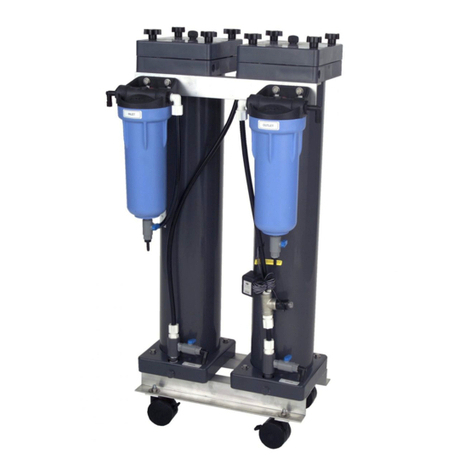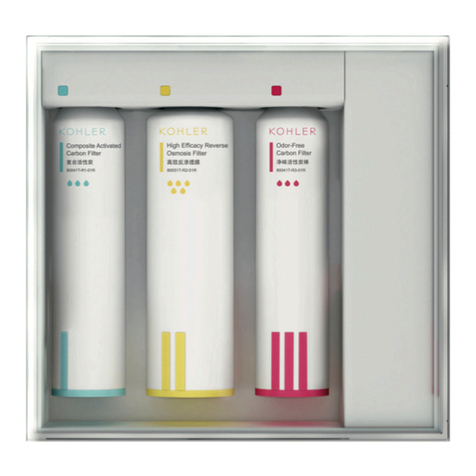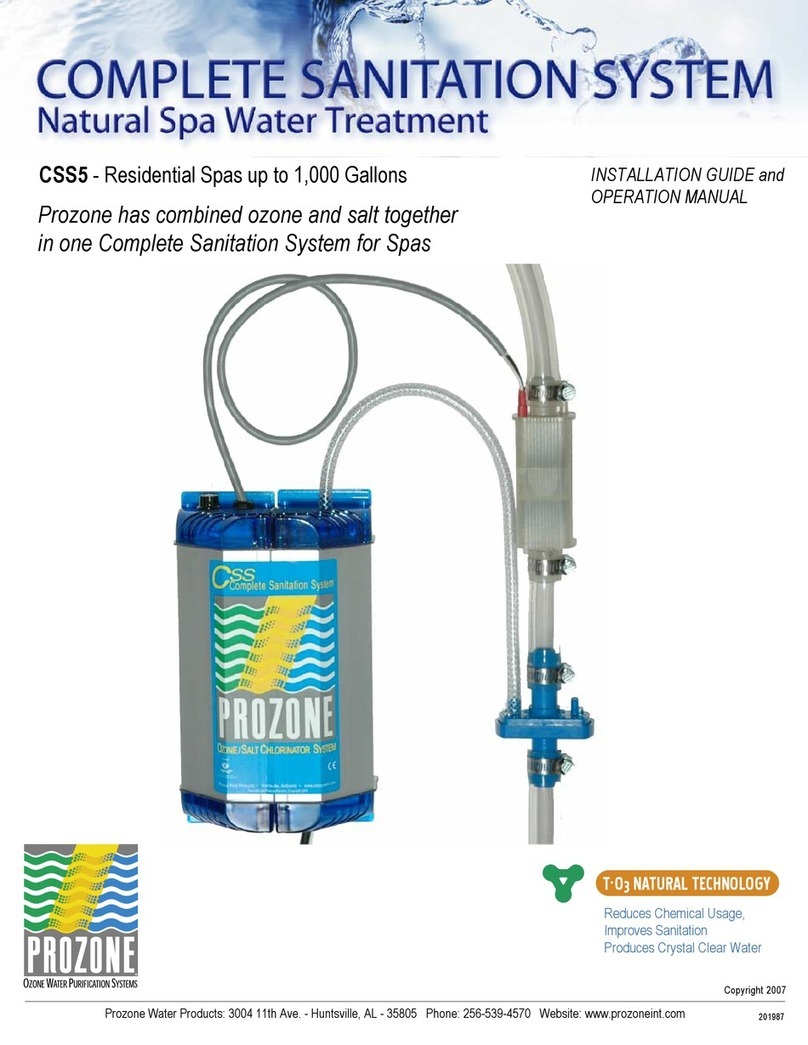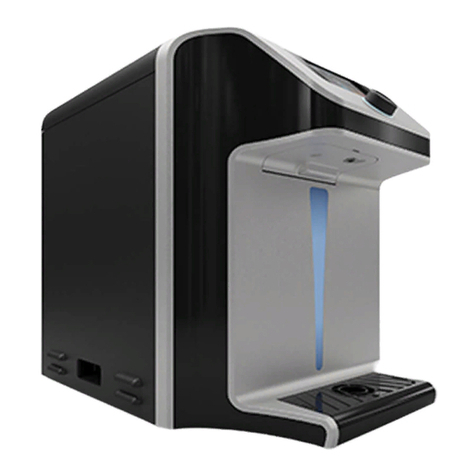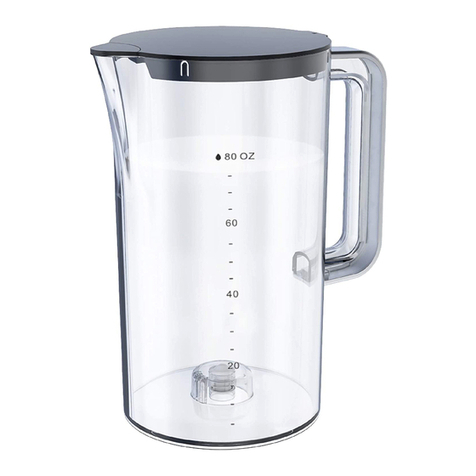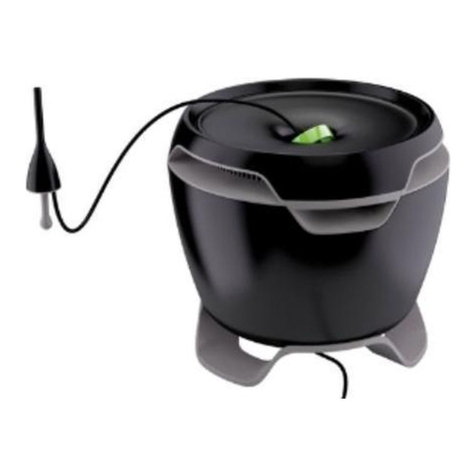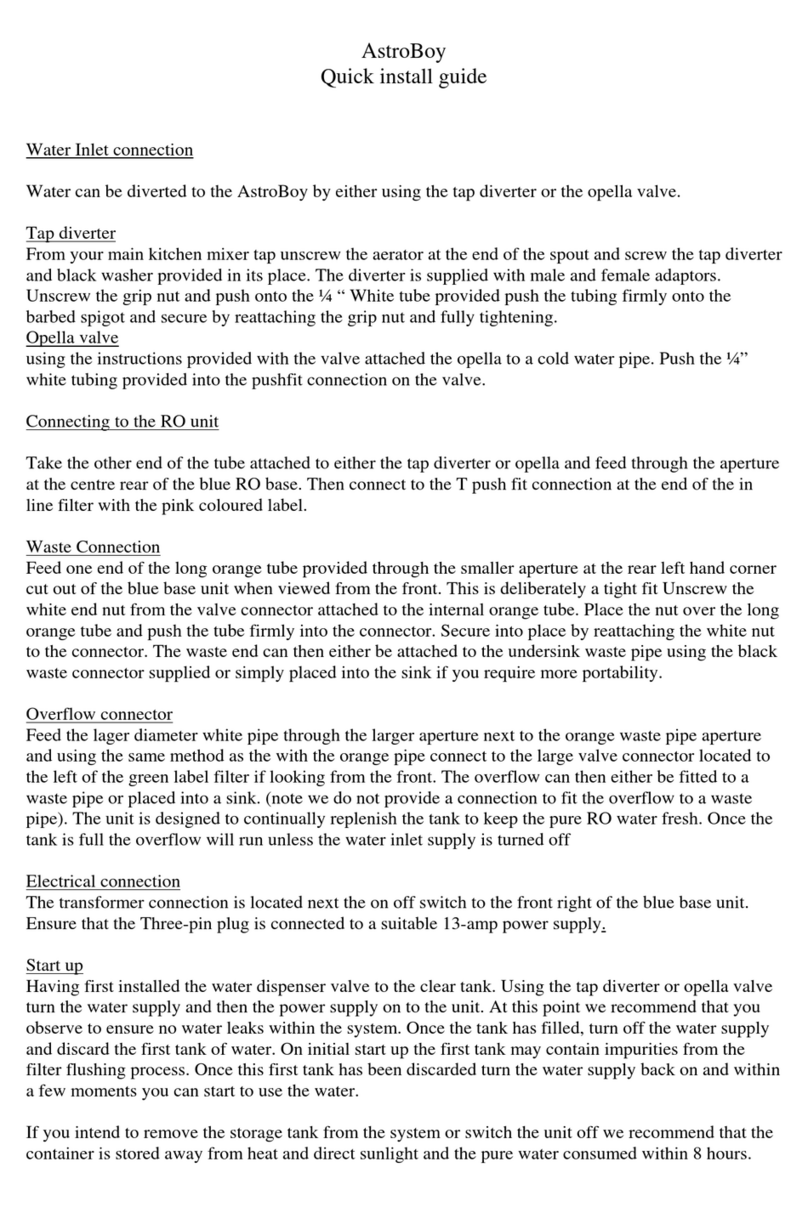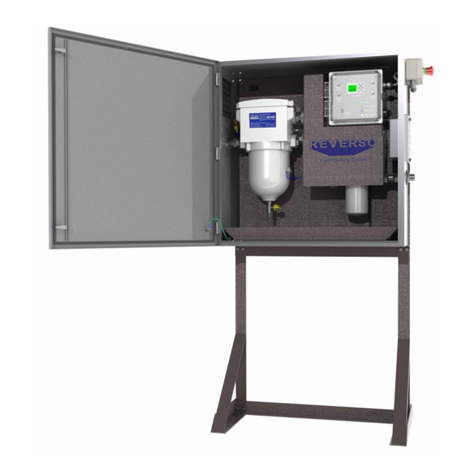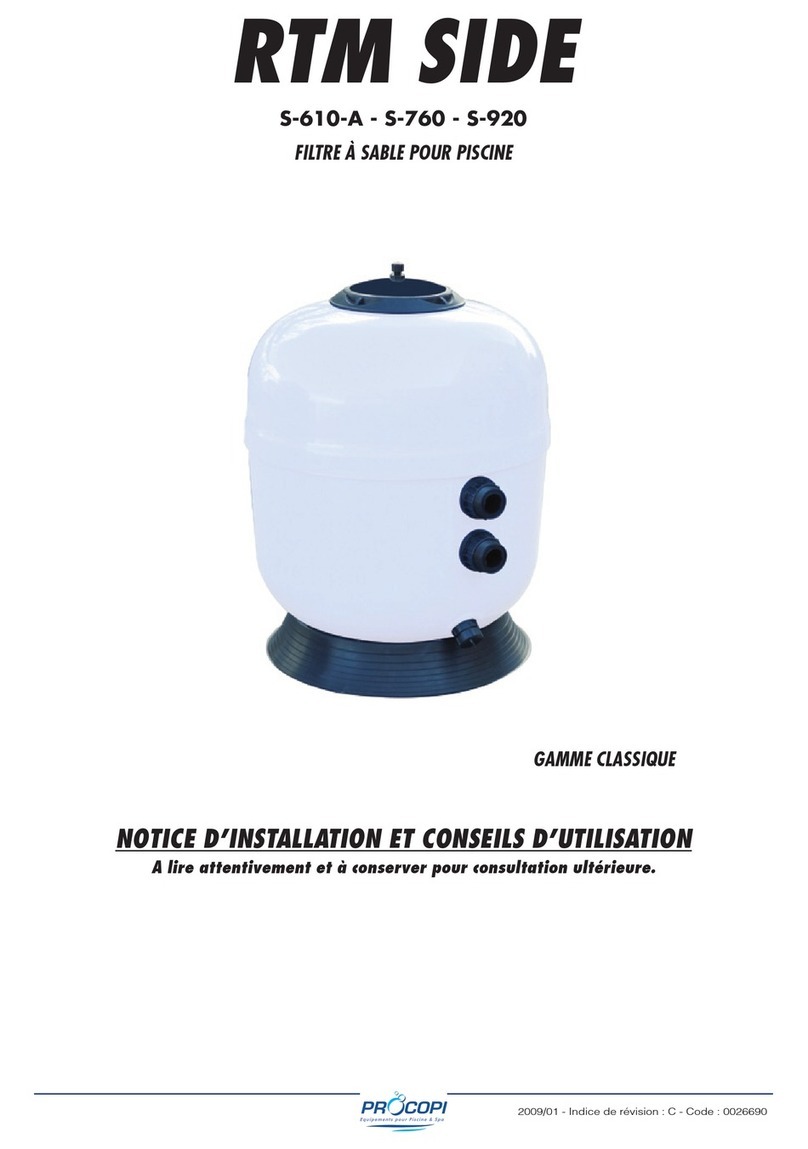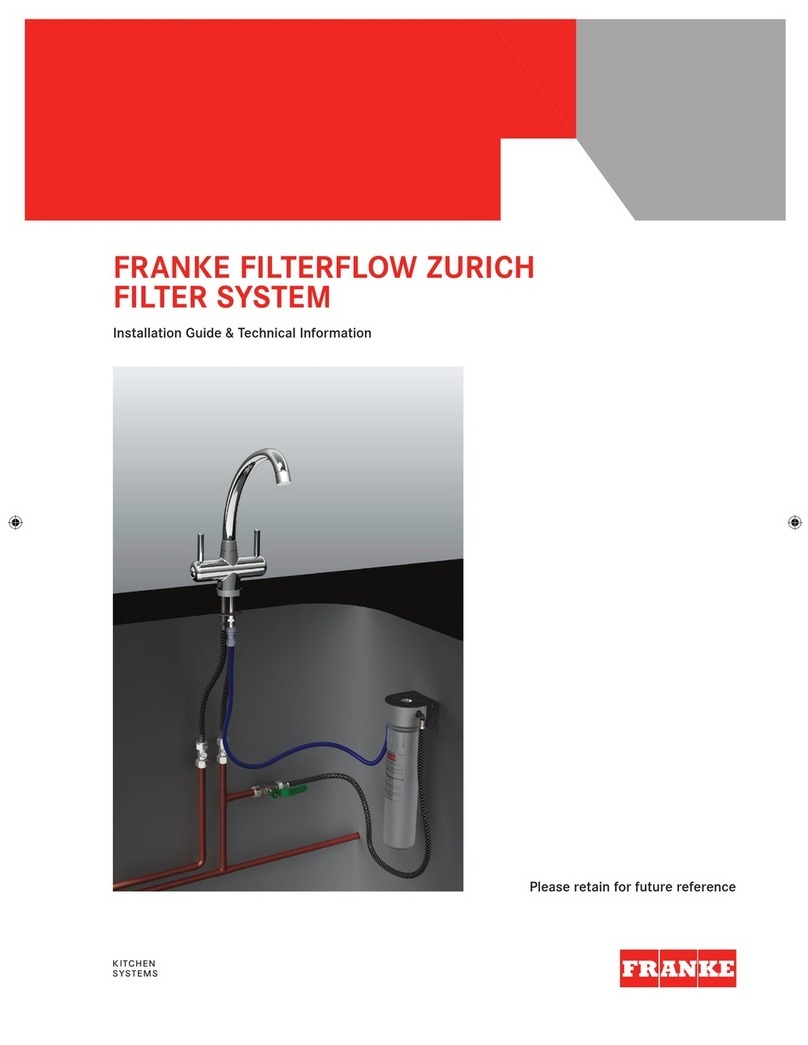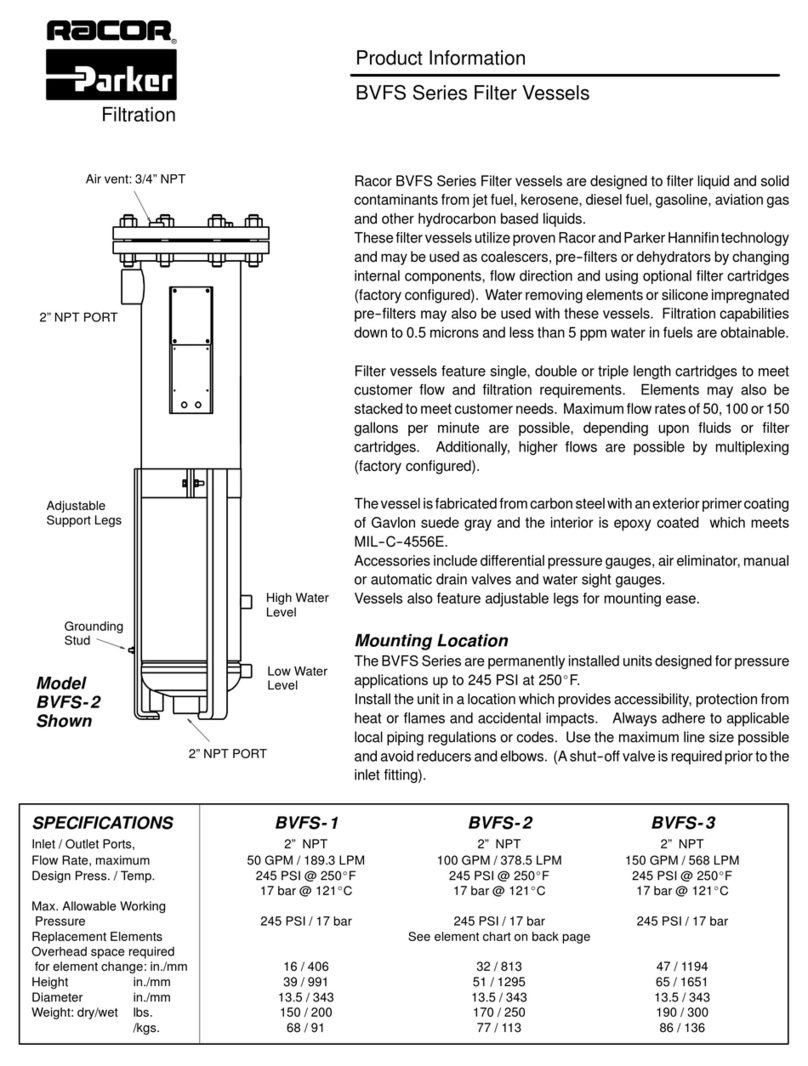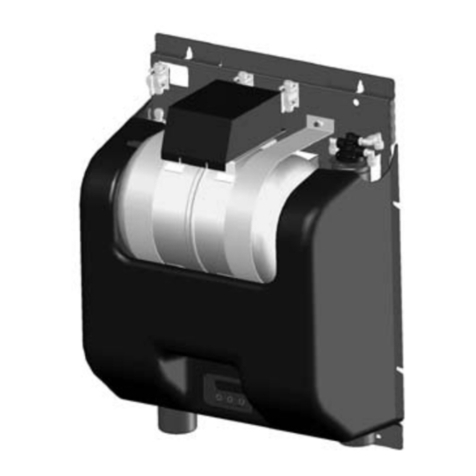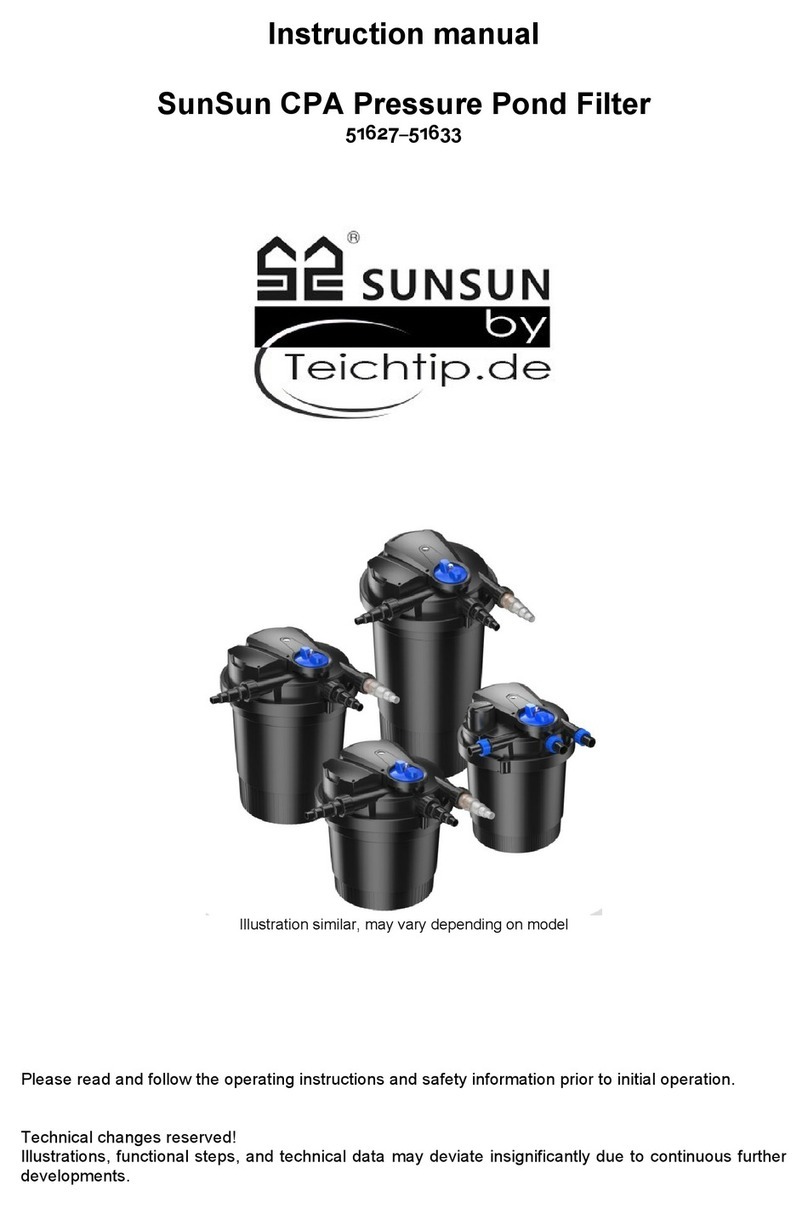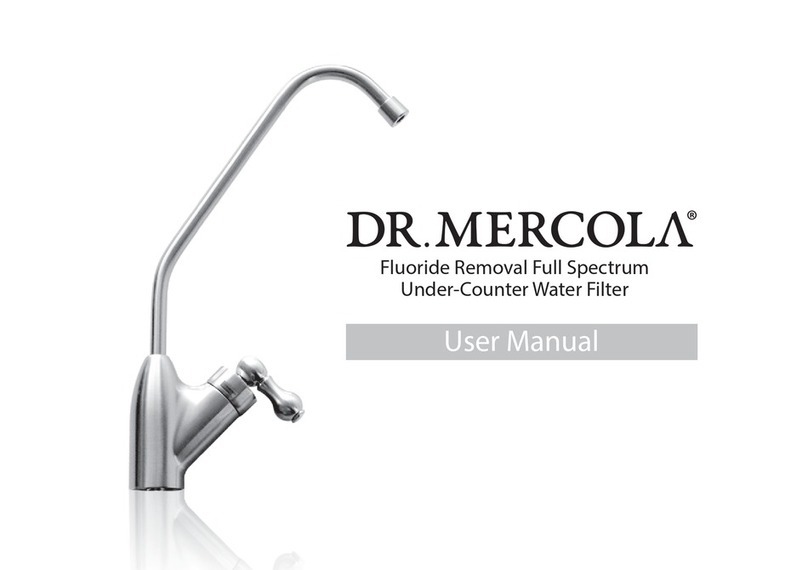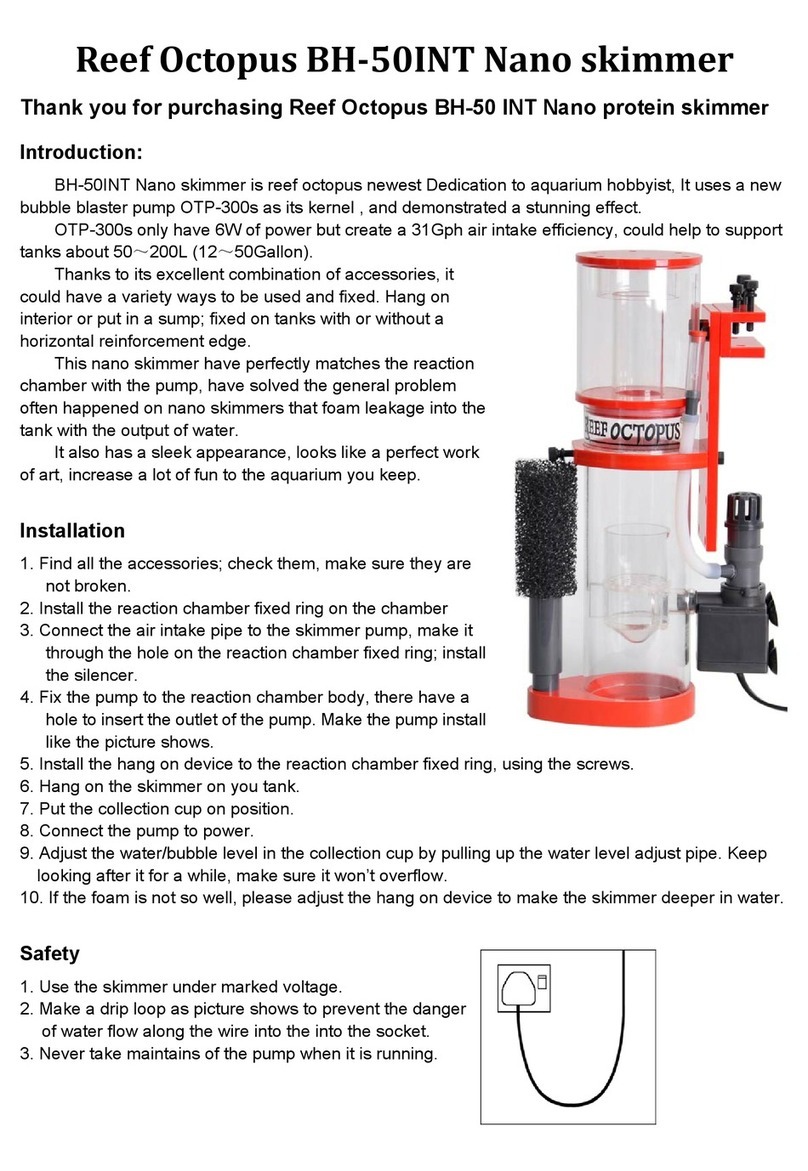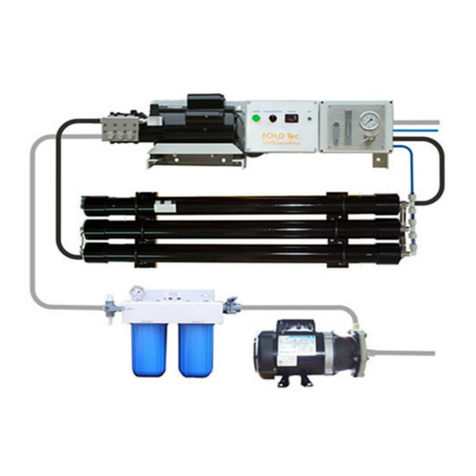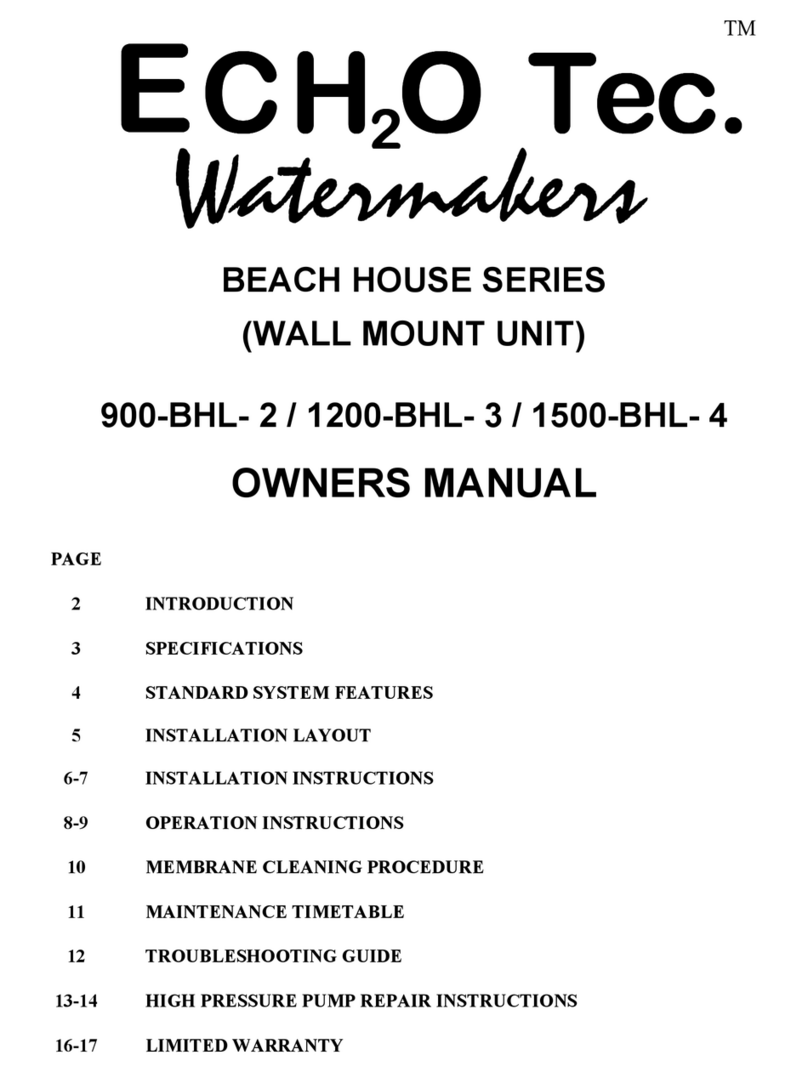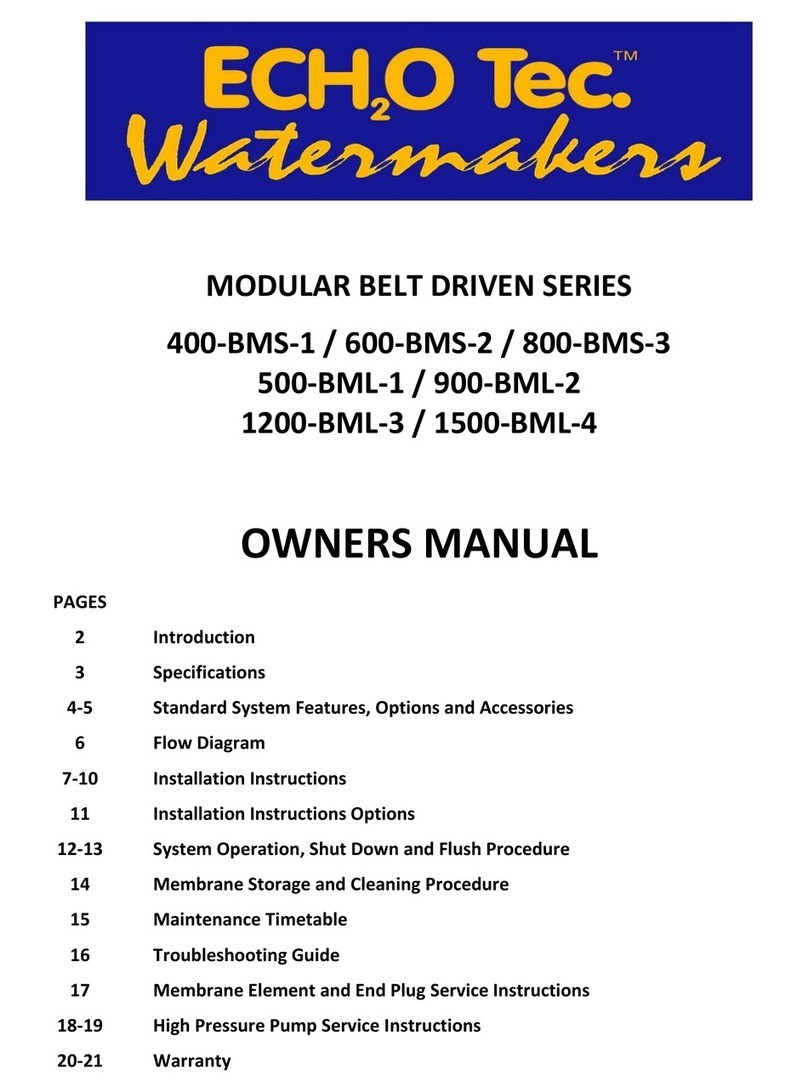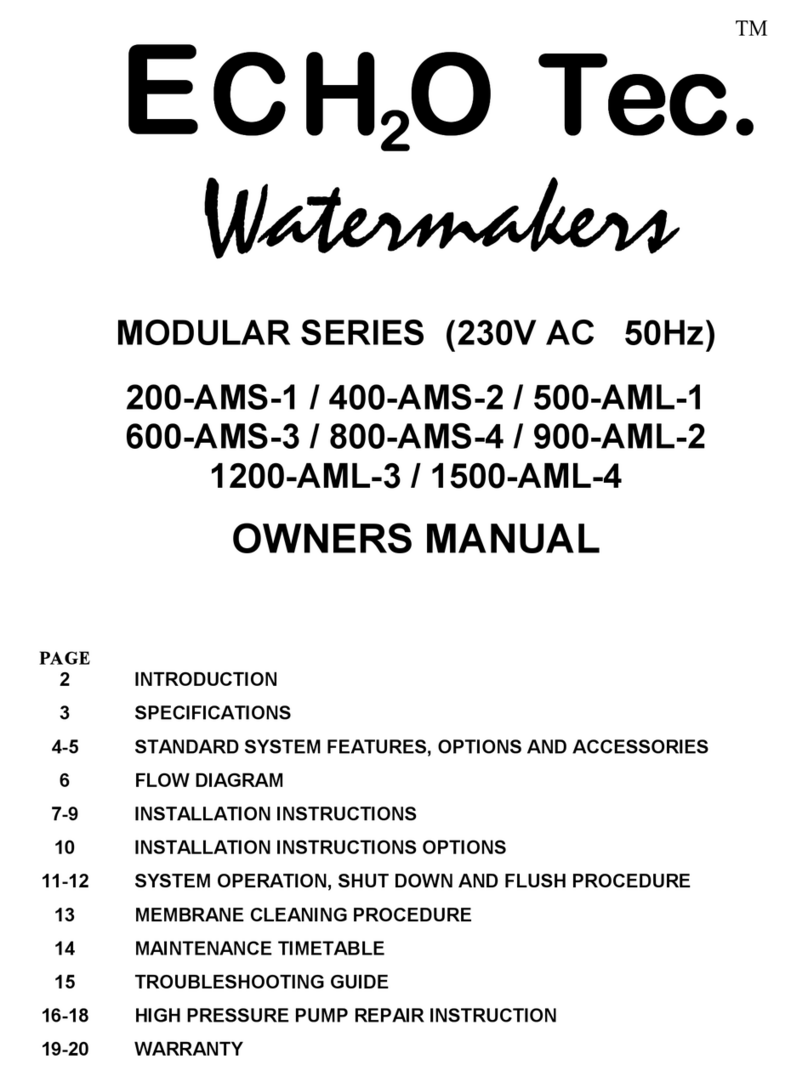
1) In a clean plastic container, mix 2.5 gallons / 10 liters of un-chlorinated fresh water with 100 grams
(1/3 container) of ECHOTec membrane preservative # 3 (Metabisulfite) for one and two 40”
membrane systems. Mix 4 gallons / 15 liters of water with 150 grams (1/2 container) of preservative
for three and four 40” membrane systems.
2) Switch the three-way valve to the cleaning/storage position.
3) Switch the diverter valve to the sample position.
4) Open the pressure control valve all the way counter clockwise (two full rounds after the spring
releases).
5) Use a funnel (avoiding air to enter the system) to pour the solution into the cleaning/storage hose or
lead the hose into an elevated plastic container while running the high-pressure pump. When the
solution has been infused, switch off the watermaker.
Your watermaker is now prepared for a shut down period of ten months.
CAUTION: After storage, discard the product water for at least thirty minutes of initial operation before
drinking or before use in food preparations.
MEMBRANE CLEANING PROCEDURE
ECHO Tec membrane element/s may be chemically cleaned when the product water output drops by 15%
of the specified amount. The frequency of this occurring will vary greatly depending upon feed water
quality. Fouling of the membrane will naturally occur during normal usage. Increased amounts of fouling
without proper cleaning of the membrane will reduce the performance of your water maker. A drop in
production of approximately 10% is normal and expected during the first year of operation.
Note: Do not clean when TDS reads high. Clean only to restore output!
CAUTION: The use of chemicals or cleaning methods other than those outlined in the cleaning instructions
will void the ECHO Tec Warranty.
CAUTION: Cleaning chemical #1 is an alkaline detergent. See warning label on side of the container and
observe all safety precautions on label.
CAUTION: Cleaning chemical #2 is an acid, a mineral scale remover. See warning label onside of container
and observe all safety precautions on label.
CAUTION: Do not mix different cleaning chemicals together. Do not use different cleaning chemicals
together at the same time.
To clean the ECHO Tec. reverse osmosis membrane mix a solution of 1.5 to 2 % by weight with warm non-
chlorinated water (113° F / 45° C) in a clean plastic container. Use 10 ltr / 2.5 gal (with 200 g or 2/3 container
cleaning agent) for one 40” membrane. Use 4 ltr / 1 gal (with 40 g cleaning agent) for every additional
membrane.
For safety reasons we do not recommend to install a 3 way re-circulating valve to accommodate the service.
Disconnect the intake and reject water hose and lead them in the plastic container. Re-circulate the solution
intermittent without pressure for up to 60 min. There will be no flow at the fresh water outlet.
CAUTION: Observe the maximum operating temperature of 113° F / 45° C. The high-pressure pump
might over heat the solution on re-circulating.




















